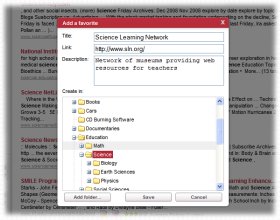|
Education
Web
Viewing 1-2 of 2 total results
explain shades of meaning in related words (e.g., softly and quietly). As in the fourth and fifth grades, students should continue to engage in exten sive independent reading as the primary means for increasing vocabulary knowl edge. They must continue to be giv...
1
0
explain shades of meaning in related words (e.g., softly and quietly). As in the fourth and fifth grades, students should continue to engage in exten sive independent reading as the primary means for increasing vocabulary knowl edge. They must continue to be given ample opportunities and encouragement to read. Vocabulary instruction must still be systematic (see the vocabulary guide lines for the fourth grade). Instruction in word derivation should be a common component of instruction across the academic
35
0
http://www.cde.ca.gov/re/pn/fd/documents/rlafw.pdf#page=35
www.cde.ca.gov/re/pn/fd/documents/rlafw.pdf#page=35
<span class="highlight">of</span> those skills by the end <span class="highlight">of</span> the third grade is the goal <span class="highlight">for</span> all students. Students achieve those skills by building on a progression <span class="highlight">of</span> carefully specified and strategically sequenced content standards and instruction that begins in kindergarten. Proficiency is based on critical building blocks in each grade. Some <span class="highlight">of</span> the building blocks (e.g., vocabulary development, <span class="highlight">analysis</span> <span class="highlight">of</span> narrative text) span kindergarten through grade three, and others (e.g., phonemic awareness, concepts about print) are
36
0
http://www.cde.ca.gov/re/pn/fd/documents/rlafw.pdf#page=36
www.cde.ca.gov/re/pn/fd/documents/rlafw.pdf#page=36
importance <span class="highlight">of</span> struc­ tural features <span class="highlight">of</span> words (affixes) to word meaning (Beck, McKeown, and Kucan 2002). Wide reading is essential to learning vocabulary and must be an integral <span class="highlight">component</span> <span class="highlight">of</span> instruction. At first the teacher should read literary and expository texts to students, exposing them to vocabulary they are not yet able to read. As students develop proficiency in word <span class="highlight">recognition</span>, they are taught <span class="highlight">independent</span> Chapter 3 Content Standards and Instructional Practices— Kindergarten Through Research has
103
0
http://www.cde.ca.gov/re/pn/fd/documents/rlafw.pdf#page=103
www.cde.ca.gov/re/pn/fd/documents/rlafw.pdf#page=103
expression. The strands to be emphasized at the third-grade level are listed on the previous page under the appropriate domains. Each <span class="highlight">of</span> the strands is addressed separately with the exception <span class="highlight">of</span> the written and oral English-language conventions strand, which is integrated within appro­ priate sections. writing listeningreading Word <span class="highlight">Analysis</span>, Fluency, and Vocabulary speaking Development Decoding and Word <span class="highlight">Recognition</span> Specific decoding instruction in the earlier grades and redundancy <span class="highlight">of</span> exposure through
124
0
http://www.cde.ca.gov/re/pn/fd/documents/rlafw.pdf#page=124
www.cde.ca.gov/re/pn/fd/documents/rlafw.pdf#page=124
in their understand­ ing and <span class="highlight">analysis</span> <span class="highlight">of</span> text. Many students need encouragement and structures to read independently outside class so that they can strengthen all aspects <span class="highlight">of</span> their reading development (Baker, Gersten, and Grossen 2002). Students with diagnosed needs in word <span class="highlight">recognition</span> and fluency will require the most intensive interventions in grades four through eight (Bos and Vaughn 2002; Foorman and Torgesen 2001). However, teachers in self-contained class­ rooms and content areas can assist in a
146
0
http://www.cde.ca.gov/re/pn/fd/documents/rlafw.pdf#page=146
www.cde.ca.gov/re/pn/fd/documents/rlafw.pdf#page=146
standards continue to emphasize the use <span class="highlight">of</span> internal, morphological, etymological, and historical word cues. In addition, students are expected to understand and explain frequently used synonyms, antonyms, and homographs. Students should continue to engage in extensive <span class="highlight">independent</span> reading as the primary means <span class="highlight">of</span> increasing vocabulary knowledge (Nagy 1998). Students should be given ample opportunities to read. In addition, vocabulary instruction must continue to be systematic (see the vocabulary guidelines <span class="highlight">for</span>
164
0
http://www.cde.ca.gov/re/pn/fd/documents/rlafw.pdf#page=164
www.cde.ca.gov/re/pn/fd/documents/rlafw.pdf#page=164
explain shades <span class="highlight">of</span> meaning in related words (e.g., softly and quietly). As in the fourth and fifth grades, students should continue to engage in exten­ sive <span class="highlight">independent</span> reading as the primary means <span class="highlight">for</span> increasing vocabulary knowl­ <span class="highlight">edge</span>. They must continue to be given ample opportunities and encouragement to read. Vocabulary instruction must still be systematic (see the vocabulary guide­ lines <span class="highlight">for</span> the fourth grade). Instruction in word derivation should be a common <span class="highlight">component</span> <span class="highlight">of</span> instruction across the academic
Reading Word Analysis Apply knowledge of cognates and false cognates to derive meaning from literature and texts in content areas. Grade Two 1.1 Recognize and use knowl edge of spelling patterns (e.g., diphthongs, special vowel spellings) when reading. 1.2 Apply kno...
1
0
Reading Word Analysis Apply knowledge of cognates and false cognates to derive meaning from literature and texts in content areas. Grade Two 1.1 Recognize and use knowl edge of spelling patterns (e.g., diphthongs, special vowel spellings) when reading. 1.2 Apply knowledge of basic syllabication rules when reading (e.g., vowel-consonant-vowel = su/per; vowel-consonant/ consonant-vowel = sup/per). 1.3 Decode two-syllable nonsense words and regular multisyllable words. 1.4 Recognize
39
0
http://www.cde.ca.gov/re/pn/fd/documents/englangdev-stnd.pdf#page=39
www.cde.ca.gov/re/pn/fd/documents/englangdev-stnd.pdf#page=39
Reading Word <span class="highlight">Analysis</span> Apply knowledge <span class="highlight">of</span> cognates and false cognates to derive meaning from literature and texts in content areas. Grade Two 1.1 Recognize and use knowl­ <span class="highlight">edge</span> <span class="highlight">of</span> spelling patterns (e.g., diphthongs, special vowel spellings) when reading. 1.2 Apply knowledge <span class="highlight">of</span> basic syllabication rules when reading (e.g., vowel-consonant-vowel = su/per; vowel-consonant/ consonant-vowel = sup/per). 1.3 Decode two-syllable nonsense words and regular multisyllable words. 1.4 Recognize
|
